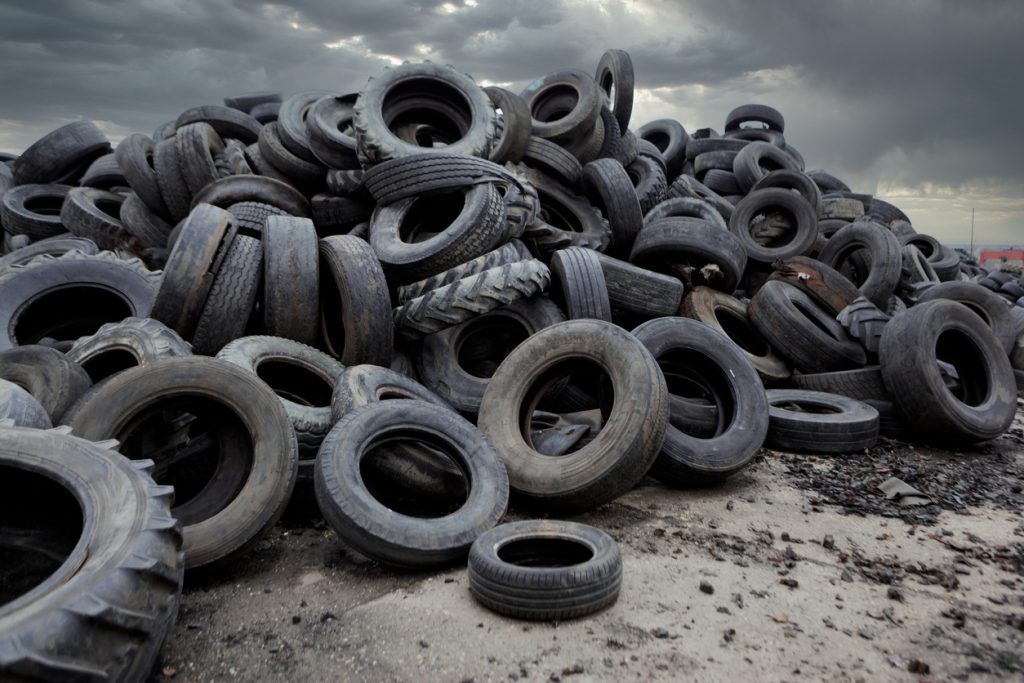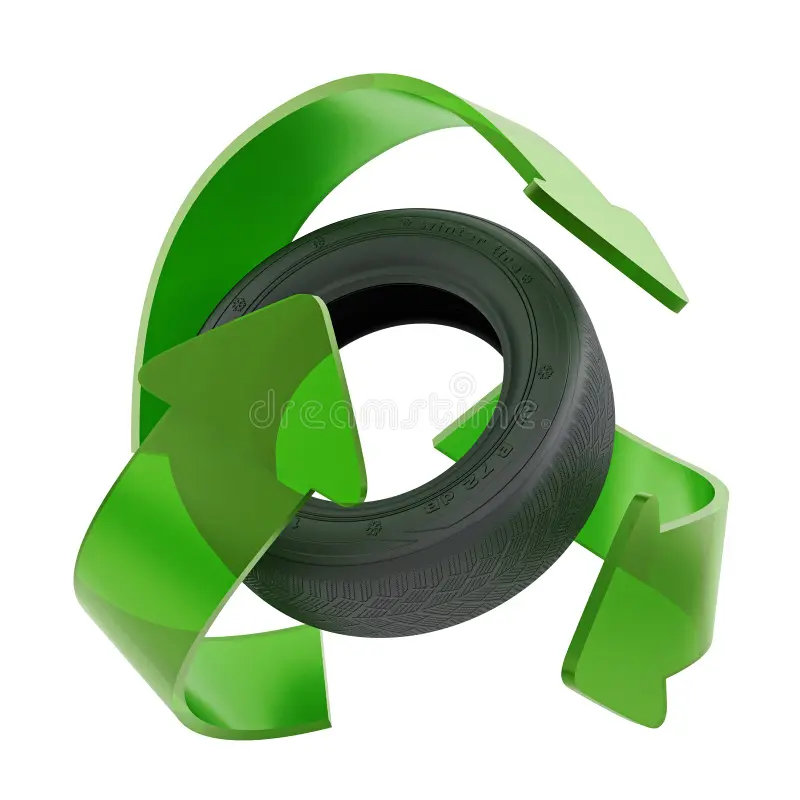In the face of escalating environmental concerns and the pressing need for sustainable waste management practices, pyrolysis technology has emerged as a beacon of hope, particularly in the transformation of waste tyres into valuable fuels by tyre pyrolysis plant. This article takes a comprehensive dive into the intricate world of waste tyre pyrolysis, exploring the technology, processes, and the high-quality fuels it produces.

Understanding Waste Tyre Pyrolysis
The Pyrolysis Process
Waste tyre pyrolysis is a thermal decomposition process that involves subjecting discarded tyres to elevated temperatures in the absence of oxygen. This controlled heating induces a series of complex chemical reactions, resulting in the breakdown of the tyre’s molecular structure. The primary outputs of this process are fuel products, carbon black, and steel.
Environmental Impact
The environmental benefits of waste tyre pyrolysis are substantial. By diverting tyres from traditional disposal methods, which often involve landfills or incineration, this technology reduces the environmental footprint associated with tyre waste. Additionally, the production of valuable fuels from discarded tyres offers a sustainable alternative to conventional fossil fuels. The small scale pyrolysis plant also contribute to the reduction of waste.
Valuable Fuels from Waste Tyre Pyrolysis
Pyrolytic Oil: Liquid Gold from Rubber
One of the key products derived from waste tyre pyrolysis is pyrolytic oil, often referred to as tyre oil or tire-derived oil. This liquid gold is a complex mixture of hydrocarbons, bearing similarities to crude oil. The applications of pyrolytic oil extend across various industries, making it a versatile and valuable fuel source.
Applications of Pyrolytic Oil
1. Fuel Production: Pyrolytic oil can be further refined and processed to produce high-quality fuels, including diesel and gasoline substitutes.
2. Industrial Heating: The combustion of pyrolytic oil generates heat, making it suitable for industrial heating applications and steam generation.
3. Chemical Feedstock: The diverse composition of pyrolytic oil makes it a potential feedstock for the production of chemicals and other valuable products.
Syngas: A Gaseous Energy Stream
Syngas, short for synthesis gas, is another significant byproduct of waste tyre pyrolysis. Comprising hydrogen, carbon monoxide, and trace amounts of methane, syngas is a versatile gas with various applications, especially in the energy sector.
Energy Applications of Syngas
1. Power Generation: Syngas can be used as a fuel in gas turbines or engines to generate electricity.
2. Chemical Synthesis: The versatile nature of syngas makes it a valuable precursor for the synthesis of chemicals and fuels.
3. Biomass Gasification: Syngas derived from waste tyre pyrolysis can be used in biomass gasification, expanding its applications to a broader range of feedstocks.
Carbon Black: A Sustainable Industrial Material
Carbon black, a fine black powder composed predominantly of elemental carbon, is a solid byproduct of waste tyre pyrolysis. While traditionally used as a reinforcing filler in tires, carbon black from pyrolysis can find applications beyond the automotive industry.
Industrial Applications of Carbon Black
1. Rubber Manufacturing: Reclaimed carbon black can be reintroduced into the rubber manufacturing process, contributing to a circular economy for rubber products.
2. Ink Production: Carbon black serves as a key component in ink production, finding applications in printing and packaging industries.
3. Coatings and Paints: The unique properties of carbon black make it a valuable additive in coatings and paints, enhancing their durability and color.

Advantages of Waste Tyre Pyrolysis
1. Waste Reduction and Recycling
Waste tyre pyrolysis provides an effective solution for reducing the environmental impact of discarded tyres. Instead of ending up in landfills or contributing to tire stockpiles, tyres can be converted into valuable fuels and industrial materials through pyrolysis.
2. Energy Recovery and Independence
The production of high-quality fuels, such as pyrolytic oil and syngas, contributes to energy recovery. By harnessing these fuels, industries can reduce their reliance on traditional fossil fuels, promoting energy independence and sustainability.
3. Circular Economy
Waste thermal desorption plant aligns with the principles of a circular economy by reintroducing valuable byproducts, like carbon black, back into the manufacturing process. This closed-loop approach minimizes waste and maximizes the utility of discarded materials.
4. Environmental Benefits
The environmental benefits of waste tyre pyrolysis are multifaceted. It reduces the volume of waste in landfills, mitigates the environmental hazards associated with tire incineration, and contributes to carbon sequestration through the utilization of carbon-rich byproducts.
Challenges and Considerations
While waste tyre pyrolysis presents a promising solution, it is not without challenges and considerations.
1. Technological Optimization
Optimizing the pyrolysis process to enhance efficiency and increase the yield of valuable byproducts remains an ongoing challenge. Researchers are continually exploring advanced technologies to address these optimization needs.
2. Economic Viability
The economic viability of waste tyre pyrolysis depends on various factors, including the cost of technology implementation, market demand for the produced fuels, and regulatory frameworks. Striking a balance between economic feasibility and environmental sustainability is crucial.
3. Environmental Impact Assessment
Ensuring that the overall environmental impact of waste tyre pyrolysis is positive requires careful assessment. This includes considerations for emissions, waste management practices, and the potential long-term effects of the byproducts.
Future Directions and Innovations
As waste tyre pyrolysis continues to evolve, ongoing research and innovation are essential to address existing challenges and unlock new opportunities.
1. Advanced Pyrolysis Technologies
Researchers are exploring advanced pyrolysis technologies, such as microwave and plasma pyrolysis, to improve the efficiency and environmental performance of the process.
2. Integration with Other Technologies
Combining waste tyre pyrolysis with complementary technologies, such as gasification or hydrothermal processing, holds promise for enhancing overall process efficiency and diversifying the range of valuable byproducts.
3. Policy and Regulatory Support
Establishing supportive policies and regulatory frameworks is crucial for fostering the widespread adoption of waste tyre pyrolysis. Governments and regulatory bodies play a pivotal role in incentivizing sustainable waste management practices.
Conclusion
Waste tyre pyrolysis stands at the intersection of environmental stewardship and resource recovery, offering a transformative solution to the global challenge of tire waste. Through the conversion of discarded tyres into valuable fuels and industrial materials, pyrolysis technology not only mitigates environmental hazards but also contributes to a more sustainable and circular economy. When you are finding more information, view https://www.bestongroup.com/cy/. As technology continues to advance and the world seeks innovative ways to address waste and energy challenges, waste tyre pyrolysis emerges as a beacon of hope—a shining example of turning a potential environmental burden into a valuable resource.